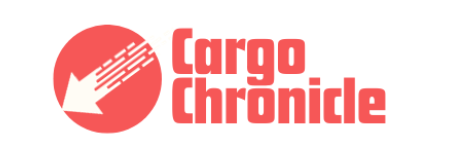Key takeaways
A game-changing technique that is revolutionizing the healthcare sector is reverse pharmaceutical distribution, which has advantages including inventory management, patient safety, cost savings, regulatory compliance, and environmental sustainability. Efficiency is being improved by creative solutions like barcode scanning and working with specialist service providers. Adopting cutting-edge technologies such as blockchain, AI, IoT, and RPA could result in more intensive take-back initiatives, easier integration of telemedicine, cooperative alliances, and an emphasis on data analytics. Reverse pharmaceutical distribution has the potential to completely transform the pharmaceutical supply chain and raise the bar for healthcare’s effectiveness, sustainability, and patient care.

Introduction
Reverse medicine distribution is a cutting-edge strategy that is revolutionizing the healthcare industry. Examining the subtleties of reverse distribution systems is helping healthcare professionals discover a plethora of benefits, such as cost savings, inventory management, patient safety, regulatory compliance, and environmental sustainability. Although there are challenges associated with reverse pharmaceutical distribution, innovative solutions such as barcode scanning, collaborating with specialized service providers, standardizing procedures, and enhancing communication are paving the way for a more efficient and patient-focused medication supply chain. Reverse pharmaceutical distribution has a very bright future thanks to the incorporation of cutting-edge technologies like RPA, blockchain, AI, and the Internet of Things. Expanded take-back programs, smooth telemedicine integration, cooperative alliances, and a stronger focus on data analytics and predictive modeling are all possible outcomes of these technologies. Embracing these trends and opportunities will not only revolutionize the medication supply chain but also set a new standard for efficiency, sustainability, and patient care in the healthcare landscape.
Understanding Reverse Pharmaceutical Distribution
The practice of returning unused or expired pharmaceuticals from healthcare facilities, such as pharmacies, clinics, and hospitals, to pharmaceutical manufacturers or approved distributors is known as “reverse pharmaceutical distribution.” In order to guarantee the safe and effective management of pharmaceutical products, it is an essential component of the pharmaceutical supply chain.
Healthcare workers can obtain understanding of the significance of appropriate medicine disposal, inventory management, and regulatory compliance by studying reverse pharmaceutical distribution. As a result, they can handle and dispose of pharmaceuticals with more knowledge, improving patient safety and cutting down on medicine waste.
Benefits of Implementing Reverse Pharmaceutical Distribution
Reverse pharmaceutical distribution has many advantages for pharmaceutical companies, healthcare providers, and the healthcare sector as a whole. Among the principal advantages are:
1. Cost savings: By cutting waste and maximizing inventory levels, healthcare providers can save money by properly managing unwanted or expired pharmaceuticals through reverse distribution.
2. Regulatory compliance: By guaranteeing compliance with legal requirements for the appropriate disposal of pharmaceutical items, reverse pharmaceutical distribution lowers the possibility of non-compliance and the fines that come with it.
3. Environmental sustainability: Reverse distribution helps to prevent the discharge of hazardous materials into the environment by making it easier to destroy and dispose of pharmaceutical items safely.
4. Improved patient safety: By properly discarding unwanted or expired drugs, the chance of medication errors and unintentional ingestion is reduced, protecting patients’ health and welfare.
5. Better inventory control: By guaranteeing prompt returns and replacements, reverse distribution helps healthcare providers better control their drug inventory by lowering stockouts and medication expiration.
Challenges and Solutions in Reverse Pharmaceutical Distribution
Reverse pharmaceutical distribution has several advantages, but there are also a number of issues that need to be resolved. Typical difficulties include the following:
1. Returning drugs with the appropriate identification and separation
2. Logistics and transportation for effective returns
3. State laws that differ and regulations that are complex
4. Data administration and returned goods tracking
Innovative approaches, like the following, can be used to get beyond these obstacles:
1. Putting barcode tracking and scanning technologies in place
2. Working along with providers of specialist reverse distribution services
3. Creating defined practices and guidelines for distribution in reverse
4. Improving pharmaceutical makers’ and healthcare providers’ cooperation and communication
Reverse pharmaceutical distribution can be made much more successful and efficient by addressing these issues and putting suitable solutions in place.
Innovative Technologies Driving Reverse Pharmaceutical Distribution
The development of reverse pharmaceutical distribution is mostly driven by technological improvements. Several cutting-edge technologies that are transforming the sector include:
1. Blockchain: This technology ensures data integrity and improves supply chain visibility by offering a transparent and safe platform for tracking and confirming the movement of pharmaceutical products throughout the reverse distribution process.
2. Artificial Intelligence (AI): AI-driven systems are able to examine vast amounts of data in order to spot patterns and trends. This allows pharmaceutical companies and healthcare providers to make data-driven choices about inventory control, reverse distribution, and regulatory compliance.
3. Internet of Things (IoT): During the reverse distribution process, pharmaceutical products can be monitored for location and condition using IoT devices like RFID tags and smart sensors. This ensures ideal storage conditions and guards against theft or loss.
4. Robotic Process Automation (RPA): RPA technology reduces human error, increases accuracy, and automates repetitive jobs in the reverse distribution process.
Through the utilization of these cutting-edge technology, the healthcare sector may optimize the distribution of pharmaceuticals in reverse and open up new avenues for productivity and value generation.
Future Trends and Opportunities in Reverse Pharmaceutical Distribution
The distribution of pharmaceuticals in reverse is undergoing constant change because to technological improvements, regulatory changes, and an increasing emphasis on sustainability. Future prospects and developments in the field could include the following:
1. Expansion of take-back programs: As the need of appropriately disposing of medications is acknowledged, more pharmacies, healthcare facilities, and community organizations will launch take-back initiatives.
2. Integration of reverse distribution and telemedicine: The emergence of telemedicine offers a chance to combine the two domains, enabling medical professionals to effectively oversee and return prescription drugs through online consultations.
3. Cooperation and partnerships: Innovation, process improvement, and value creation will be fueled by increased cooperation between healthcare providers, pharmaceutical companies, and reverse distribution service providers.
4. Put an emphasis on data analytics and predictive modeling: By utilizing these tools, pharmaceutical companies and healthcare providers can better understand trends, streamline reverse distribution procedures, and make well-informed decisions about inventory control and legal compliance.
The healthcare sector may optimize the benefits of reverse pharmaceutical distribution and establish a more enduring and effective drug supply chain by seizing these upcoming trends and opportunities.
Conclusion
In conclusion, as cutting-edge technologies like blockchain, AI, IoT, and RPA continue to transform the sector, the future of reverse pharmaceutical distribution is bright and full of potential. The pharmaceutical supply chain is expected to become more effective, sustainable, and patient-centered with an emphasis on extended take-back programs, seamless telemedicine integration, cooperative alliances, and data analytics. Healthcare workers may set a new benchmark for effectiveness, sustainability, and patient care in the rapidly changing healthcare industry by seizing these trends and possibilities. Reverse pharmaceutical distribution is a game-changing strategy that is improving the healthcare sector, not just a method of doing business.
FAQ
What is pharmaceutical reverse distribution?
The practice of securely returning unneeded or expired pharmaceuticals from healthcare practitioners back to pharmaceutical manufacturers or approved distributors is known as pharmaceutical reverse distribution. In the end, this vital link in the pharmaceutical supply chain helps to reduce medicine waste and improve patient safety by ensuring appropriate disposal, inventory control, and regulatory compliance. Healthcare workers can optimize inventory levels, reduce costs, comply with regulations, support environmental sustainability, and improve patient safety by properly disposing of medications by learning about and using reverse pharmaceutical distribution. It is an essential procedure that greatly influences the development of a pharmaceutical supply chain in the healthcare sector that is more effective, long-lasting, and patient-focused.
What is reverse logistics in pharmaceutical industry?
The process of handling the return and disposal of unneeded or expired pharmaceuticals from healthcare providers back to manufacturers or authorized distributors is known as “reverse logistics” in the pharmaceutical business. In order to maintain appropriate inventory management, regulatory compliance, and environmental sustainability, this component of the pharmaceutical supply chain is crucial. Healthcare workers can maximize medicine returns, cut waste, and improve patient safety by using appropriate disposal techniques by implementing reverse logistics practices. It is an essential part of the healthcare industry’s effective and accountable administration of pharmaceutical products.
What are the challenges of reverse supply chain?
Reverse supply chain management frequently faces difficulties, such as the difficult and time-consuming task of correctly identifying and classifying returned pharmaceuticals. Logistics and transportation for effective returns provide another difficulty since careful planning is needed to guarantee the prompt and safe delivery of returned goods. Adhering to correct pharmaceutical product handling and disposal practices can also be challenging due to regulatory complications and differing state legislation. Another problem is data management and tracking of returned goods because it can be difficult and error-prone to keep proper records and documentation of returned pharmaceuticals.
Innovative approaches and technological advancements can be used to overcome these obstacles and expedite the reverse supply chain procedure. Returned medicine identification and segregation can be made more accurate and efficient by putting barcode scanning and tracking systems in place. Transportation and logistics can be made more efficient for effective returns by working with specialized reverse distribution service providers. Reverse distribution methods and standard operating procedures can help ensure legal and regulatory compliance while negotiating difficult regulatory environments. Improving data management and tracking of returned products can be achieved by fostering greater collaboration and communication between pharmaceutical producers and healthcare providers. This will guarantee accuracy and transparency throughout the reverse supply chain process. Reverse supply chain management may be made much more successful and efficient by coming up with creative solutions to these problems.
What is the importance of reverse distribution in modern selling?
In today’s marketplace, reverse distribution is essential since it makes sure that leftover or expired pharmaceuticals are properly managed and disposed of. Healthcare providers and pharmaceutical companies must manage returned goods effectively in today’s fast-paced, cutthroat market in order to maximize inventory levels, cut costs, and guarantee regulatory compliance. Businesses can reduce expenses and improve inventory management by implementing reverse distribution techniques. They can also improve patient safety by disposing of medications properly. For the pharmaceutical supply chain in the healthcare sector to become more patient-focused and sustainable, this component is essential. Adopting reverse distribution into contemporary marketing strategies is not merely a fad; for companies seeking to maintain the greatest standards of quality and competitiveness, it is a strategic need. standards of efficiency, sustainability, and patient care.
Hope this article was helpful and for checkout our previous blog post by clicking here

